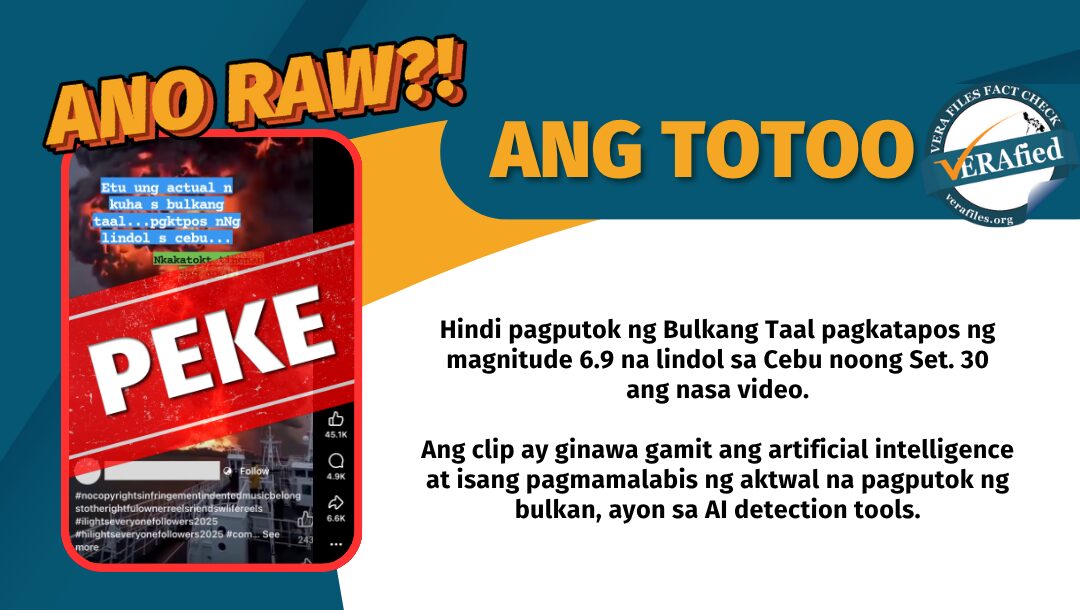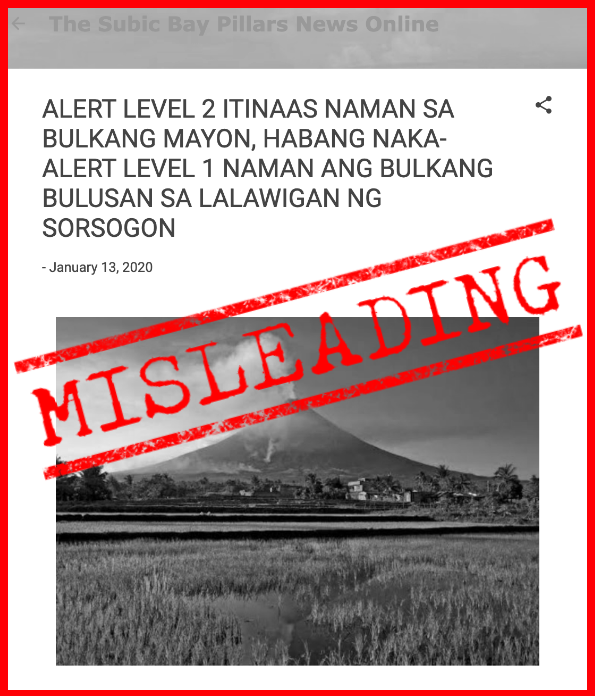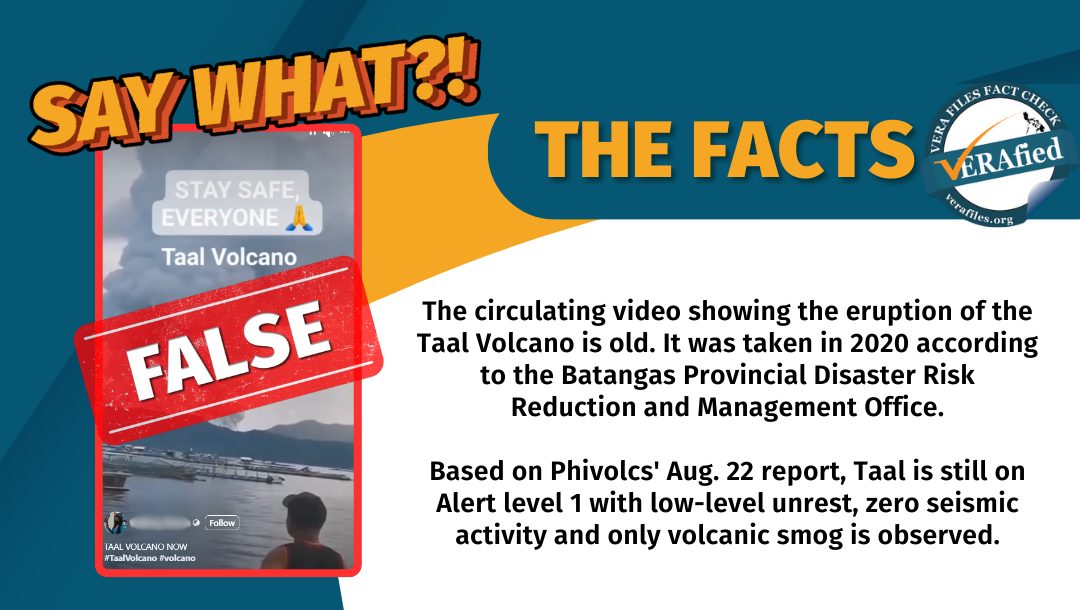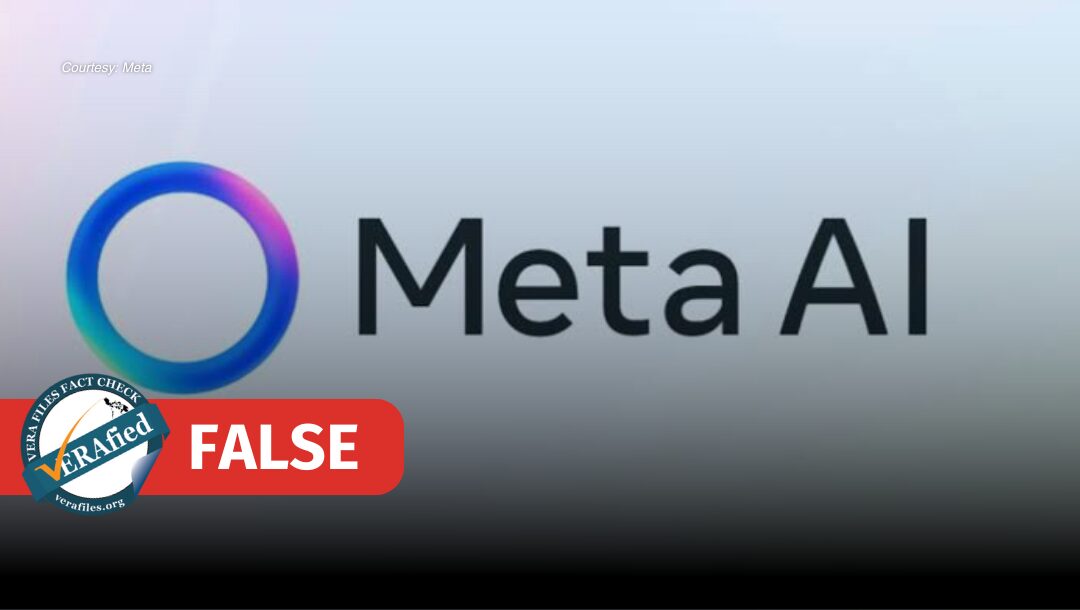A video showing what looked like an erupting volcano, supposedly Taal in Batangas, after the magnitude 6.9 earthquake in Cebu on Sept. 30 is circulating online. The clip was generated through artificial intelligence and does not show the volcano’s actual eruption.
Filipino Facebook users have been sharing since Oct. 1 a 10-second footage of the supposed eruption, seemingly taken from a massive ship with passengers on deck.
A copy of the video uploaded on Oct. 3 carried the text:
“Etu ung actual n(a) kuha s(a) Bulkang Taal pgktpos (sic) ng lindol s(a) cebu. Nkakatokt (sic) tingnan ‘yung apoy (This is the actual clip of Taal Volcano after the earthquake in Cebu. The fire is scary to look at).”
The clip was generated through artificial intelligence and does not show Taal Volcano’s eruption after the Sept. 30 earthquake in Cebu.
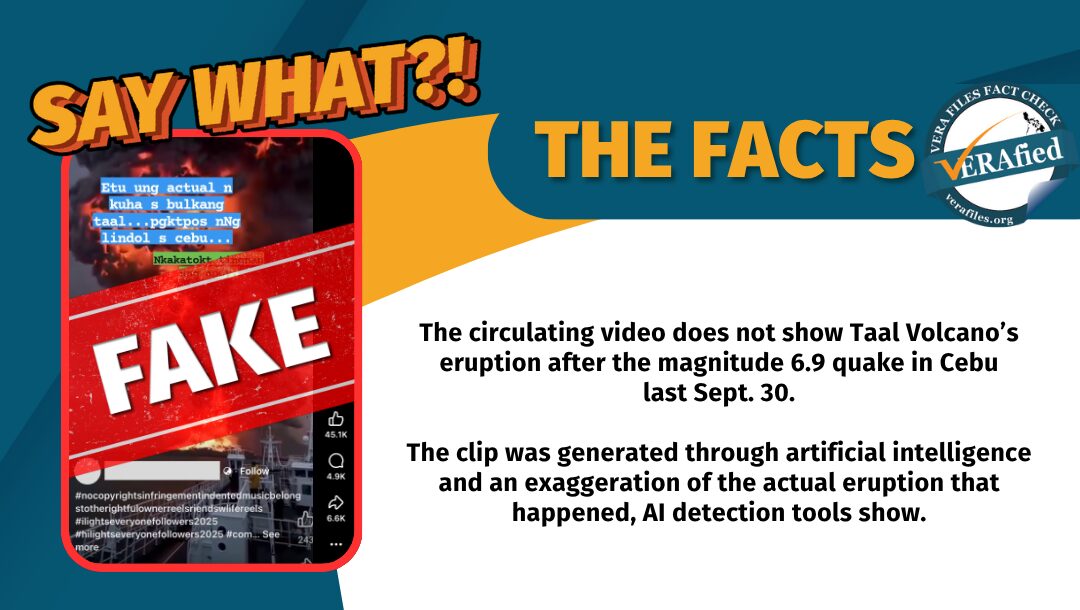
Exaggerated eruption
The Philippine Institute of Volcanology and Seismology did record a minor phreatomagmatic eruption from Taal Volcano’s crater on Oct. 1. However, official videos showed that the eruption was not as strong as the one shown in the circulating clip.
Taal Volcano again erupted on Oct. 2 – a five-minute-long phreatic eruption and another phreatomagnetic eruption, which lasted 13 minutes. The volcano remained under Alert Level 1, indicating low-level unrest.
An FB user uploaded a copy of the clip on Sept. 9, weeks before the 6.9 magnitude quake even hit Bogo City in Cebu on Sept. 30.
VERA Files reached out to the Deepfakes Analysis Unit of the India-based Misinformation Combat Alliance to further check if the video was produced using AI.
DAU ran the video in five AI-detection tools.
Three of the tools found use of AI in the video. Results from Hive AI image and deepfake classifier and AI or Not showed that AI was likely used to create the clip. DAU also ran the video’s keyframes through WasItAI, which generally revealed that the images, or significant parts of them, were AI-generated.
However, AI-detection tool Is It AI was unable to reliably detect AI in the visuals, while SynthID detector did not find any evidence that the video was done through Google AI.
“Many times an image classifier might not be able to detect what other tools can,” the DAU added.
DAU also noted that the eruption “looked like literal ropes of fire being thrown into the skies,” which is not common in any real eruption footage.
The AI-generated video started circulating the same day Taal Volcano had minor eruptions following the temblor in Cebu. PHIVOLCS clarified that the eruptions of Taal Volcano, located in Batangas, were not related to the quake in Cebu, citing their geographical distance.
The fake videos uploaded by two FB users collectively garnered 95,800 reactions, 9,600 comments, 16,000 shares and 12,800,000 views.
